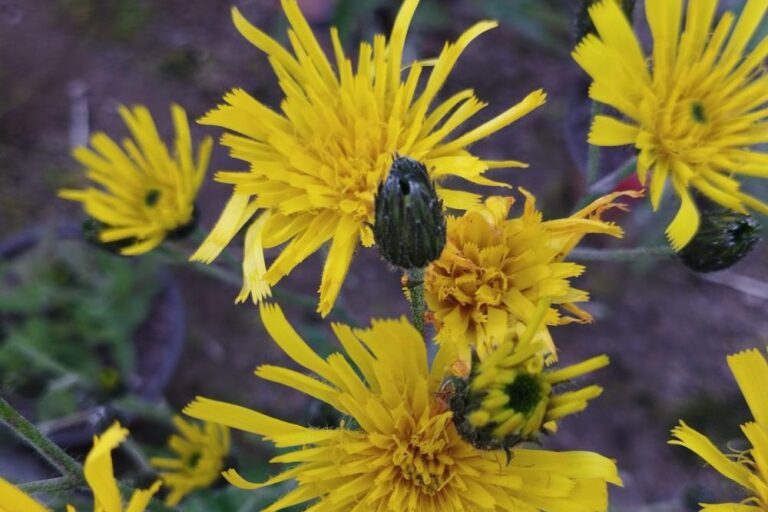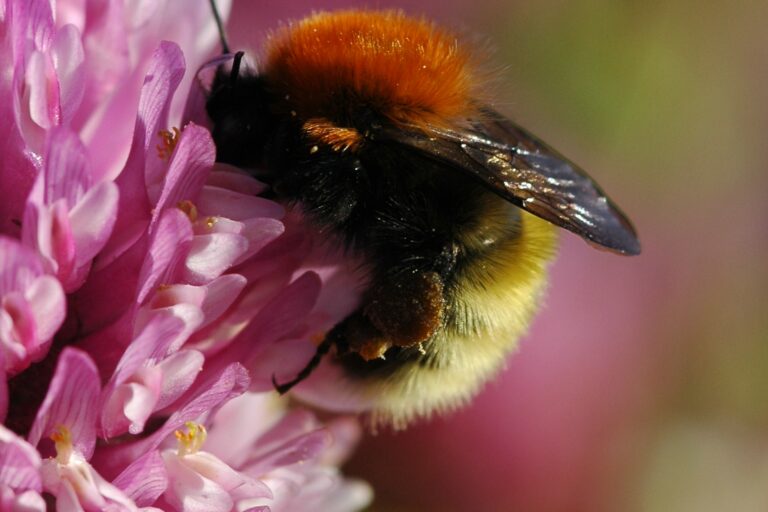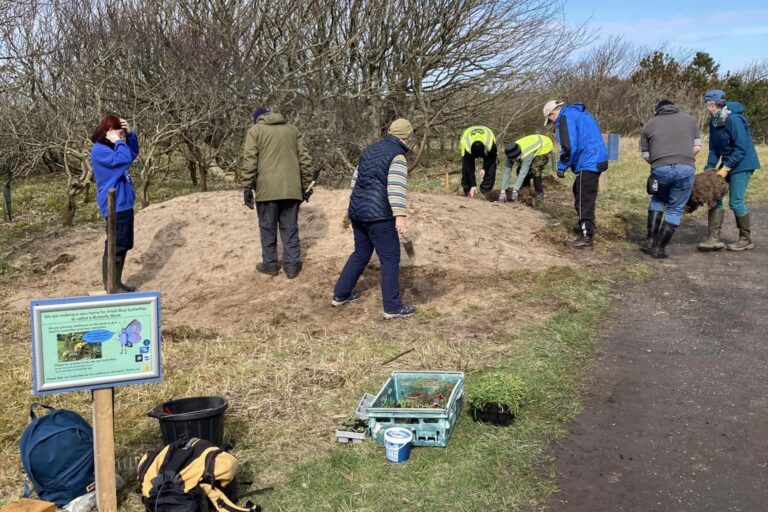Have you heard of the Purple Oxytropis? We wouldn’t blame you if you hadn’t. On the North Coast of Scotland, however, more people are getting acquainted with this rare and little-seen plant after its appearance in a local art exhibition, aptly named ‘On The Edge’.
In 2023, Becky Longworth attended a watercolour workshop run by Species on the Edge in collaboration with artist Iris Hill. In this workshop she was introduced to her local ‘species on the edge’; species found in the Caithness and Sutherland area that are rare, vulnerable, and on the edge of extinction. She came away from the session amazed and inspired by the extraordinary wildlife she had just been introduced to.
One species in particular that stayed with Becky was the Purple Oxytropis. The Purple Oxytropis, known as Oxytropis halleri by its scientific name and Cleiteag-gheur chorcra in Gaelic, is a plant that within the UK can only be found in Scotland. A member of the Fabaceae (legume) family, it is a hairy perennial with a tuft of 9-15 pairs of leaflets with a single terminal leaflet and purple flowers which grow in clusters of 6-10. Or, to put more simply, it looks like this:


The leaves can be seen from May until the first frosts of winter (normally November), while the flowers can be seen in June and July.
One of the reasons why this plant isn’t quite the household name is probably due to how tricky it is to find. It is one the UK’s rarest plants and the few places it does grow aren’t exactly on the beaten track. The Purple Oxytropis’s Scottish stronghold is the cliffs of the North mainland coast. It has a few populations on the north-east coast, one extremely isolated population on the Mull of Galloway in the south-west and can also be found near the summits of three Scottish mountains, two in Perthshire and one in Argyll. So, not exactly something you might come across in your garden or on a wee ramble through your local park.
So, as a species ‘on the edge’ – of the country, of extinction, of our awareness – how do we ensure that it doesn’t slip off the edge? We can’t exactly lead groups out to get face-to-face to it when it’s literally clinging on to the side of a cliff. No, we bring it to people. That’s what we did with Iris Hill in our watercolour workshops, that’s what the amazing Sutherland Stitchers did with their Species on the Edge tapestry, that’s what glass artist Marta Sienkiewicz did with her stunning stained glass panel, and that’s what Becky Longworth did when The Society of Caithness Artists announced the theme of their winter 2024/25 show: ‘On The Edge’. Becky took her chance to give this small, rare little flower its moment in the sun.
So, from December 2024 to March 2025, the people of Caithness were able to learn about, appreciate, and enjoy one of the UK’s rarest plants, a plant they might not have even known they shared their northerly coastline home with, without having to scale a cliff.



